July 31, 2025
Unveiling the Symbolic Emblem of Autism
The Autism Creature, also known as the TBH or Yippee creature, has emerged as a powerful and positive symbol within the autism community. Originating from online spaces in early 2021, this simple yet expressive character encapsulates the varied internal experiences of autistic individuals, fostering community, understanding, and acceptance through its versatile imagery and cultural presence.
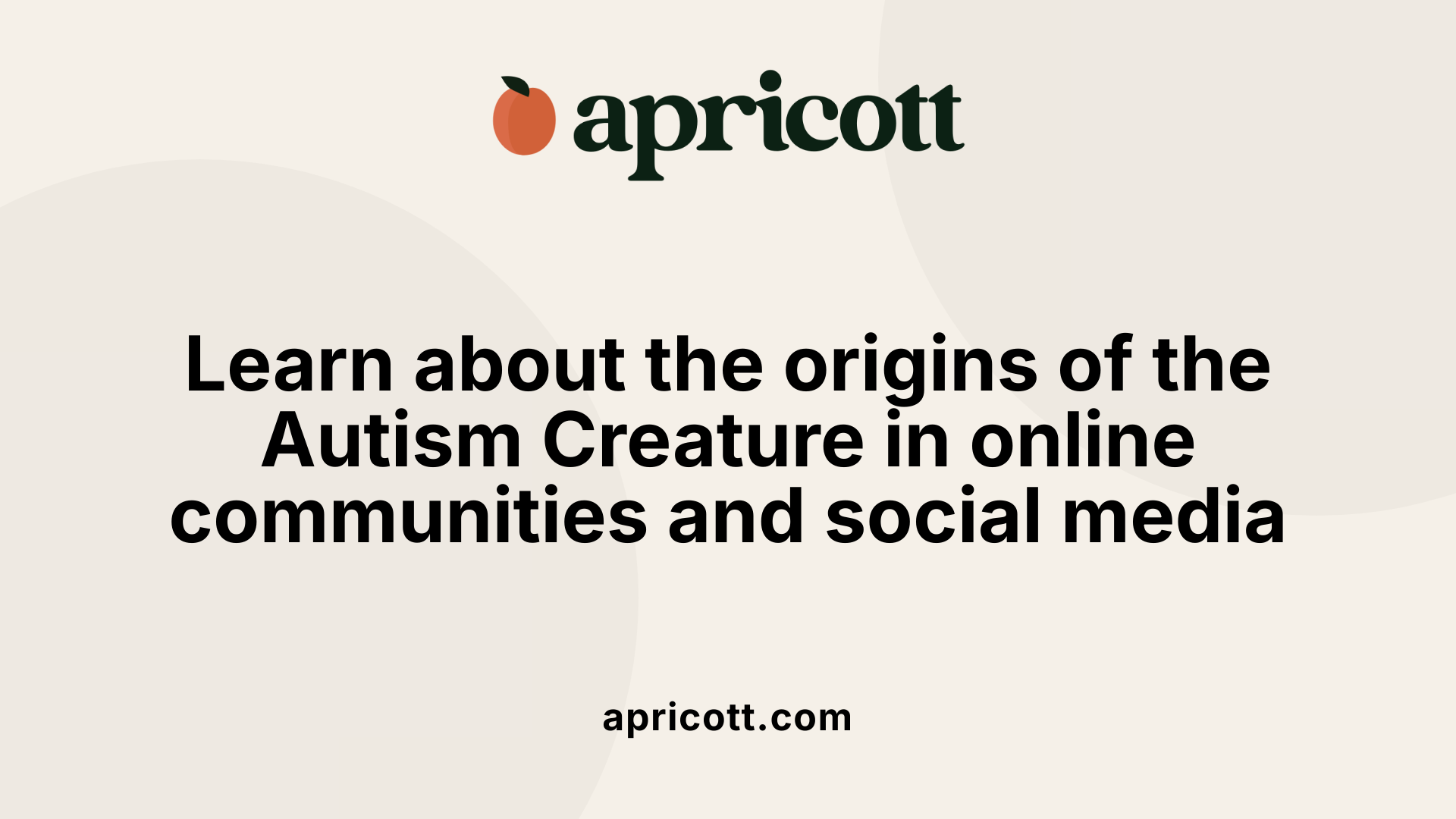
The Autism Creature, also known as the 'Yippee Creature' or 'TBH Creature', first appeared on Twitter in January 2021. It quickly gained traction within online circles, especially on Tumblr, where it became a symbol embraced by the autism community. Its popularity grew as users shared images, memes, and artwork featuring this simple yet expressive character.
The creature was created by Twitter user @acmeiku, who sketched the first version of what would become an iconic symbol. The design is straightforward: a white, squishy-looking character with large, expressive eyes. Its minimalistic features allow for a wide range of emotional and sensory representations, resonating deeply with autistic individuals who see their experiences reflected in its simple, unmasked appearance.
From its inception, the Autism Creature was intended as a positive representation of autism—a symbol that celebrates natural, unmasked identities. It embodies the concept of unfiltered autism, showcasing a state before societal pressures to mask or conform. As an empathetic icon, it offers comfort and understanding, helping to articulate complex internal states such as sensory sensitivities and feelings of joy or overstimulation.
The Autism Creature is a visual and cultural symbol that emerged online. Its simple design—a white, squishy character with big, black eyes—serves as a blank canvas for expressing diverse autistic experiences. Initially a doodle, it evolved into a widely recognized icon used in memes, fan art, and digital expressions. Its neutral appearance allows individuals to project their personal feelings, fostering community understanding and support. Over time, the creature has appeared in various pop-culture contexts, including games like "Among Us" and Minecraft, further cementing its role as a broader symbol of autism.
While some appreciate its minimalist approach for capturing the core of authentic autism expression, others critique it for possibly oversimplifying the emotional diversity of autistic life. Nonetheless, it remains a powerful tool for connection, representation, and raising awareness.
In summary, the Autism Creature's origins lie in social media's creative landscape, driven by a desire for positive, relatable symbols within the autism community. Its design reflects a celebration of natural, unmasked neurodivergence, making it a beacon of understanding and shared experience for many.
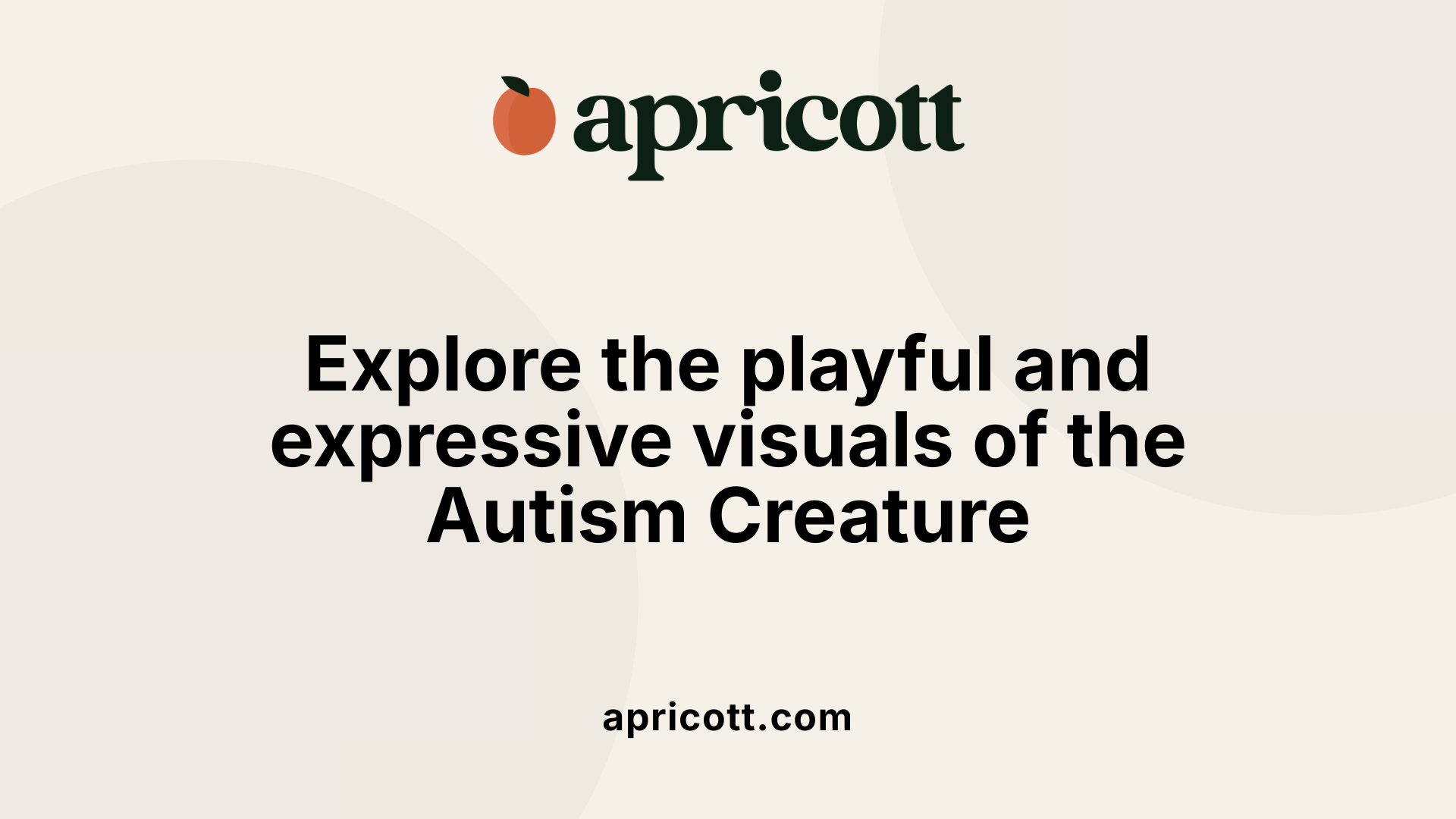
The Autism Creature, also known as the TBH Creature or Yippee, is a beloved internet meme and cultural symbol that celebrates neurodivergent identities. It is characterized by its simple, hand-drawn design featuring a white, squishy-looking character with large, expressive eyes. This visual simplicity makes it accessible and endearing, fostering relatability among viewers.
The creature embodies qualities such as playfulness, exuberance, and authentic expression. Its exaggerated features serve to humorously depict behaviors and sensory experiences linked to autism spectrum disorder (ASD). The character’s diverse emotional states—ranging from happiness and excitement to sadness and overstimulation—reflect the wide spectrum of autistic experiences.
The Autism Creature’s design is straightforward yet expressive. Its white color symbolizes purity and unmasked autism—the innate, authentic state of neurodivergence before societal pressures to conform. The creature’s large eyes play a key role in conveying a broad range of feelings and internal states, acting as windows into its emotional life. The simplicity of its form allows for easy customization and iteration, making it versatile in various digital formats.
One of the defining features of the Autism Creature is its ability to embody different emotional states. Variations include happy tones, energetic yippees like 'YIPPEE!!!', as well as sad or overstimulated expressions. These visual changes help articulate complex internal sensory experiences and emotional states often felt by autistic individuals. For example, a smiling version might represent joy and enthusiasm, while an overstimulated version with widened eyes and a distressed expression illustrates sensory overload.
The Autism Creature has proliferated across digital platforms as emojis, memes, and wallpapers, serving as a language for expression beyond words. Its visual adaptability makes it perfect for conveying nuanced feelings, internal states, and social messages. Memes often incorporate the creature to highlight specific experiences or reactions, fostering community understanding.
The creature’s catchphrase, 'YIPPEE!!!', exemplifies its exuberant personality. Digital variations include playful emojis and animated GIFs that depict a wide range of moods, making it a vibrant part of online communication. These images allow autistic individuals and allies alike to share their experiences authentically and with pride.
| Design Elements | Variations | Digital Uses | Description |
|---|---|---|---|
| White, squishy body | Happy, sad, overstimulated | Emojis, memes, wallpapers | Helps express emotions visually |
| Big expressive eyes | Excited, overwhelmed | Digital stickers, GIFs | Visual windows to internal states |
| Simple, hand-drawn style | Customized emotions | Social media posts | Accessible and relatable |
The Autism Creature’s unmasked imagery serves as a powerful symbol for authentic neurodivergent expression. Unlike clinical or pathological portrayals, this character celebrates the natural, unfiltered experience of sensory and emotional states. Community-created, the creature reflects the lived realities and joys of autistic individuals, emphasizing self-acceptance and pride.
Organizations like Revive Health Recovery incorporate the Autism Creature into their neurodiversity-affirming approaches. These initiatives use the character in therapies and support programs to foster positive identity and individual tailored care. Its widespread use and visibility reinforce the importance of genuine, creative representations of neurodiverse communities.
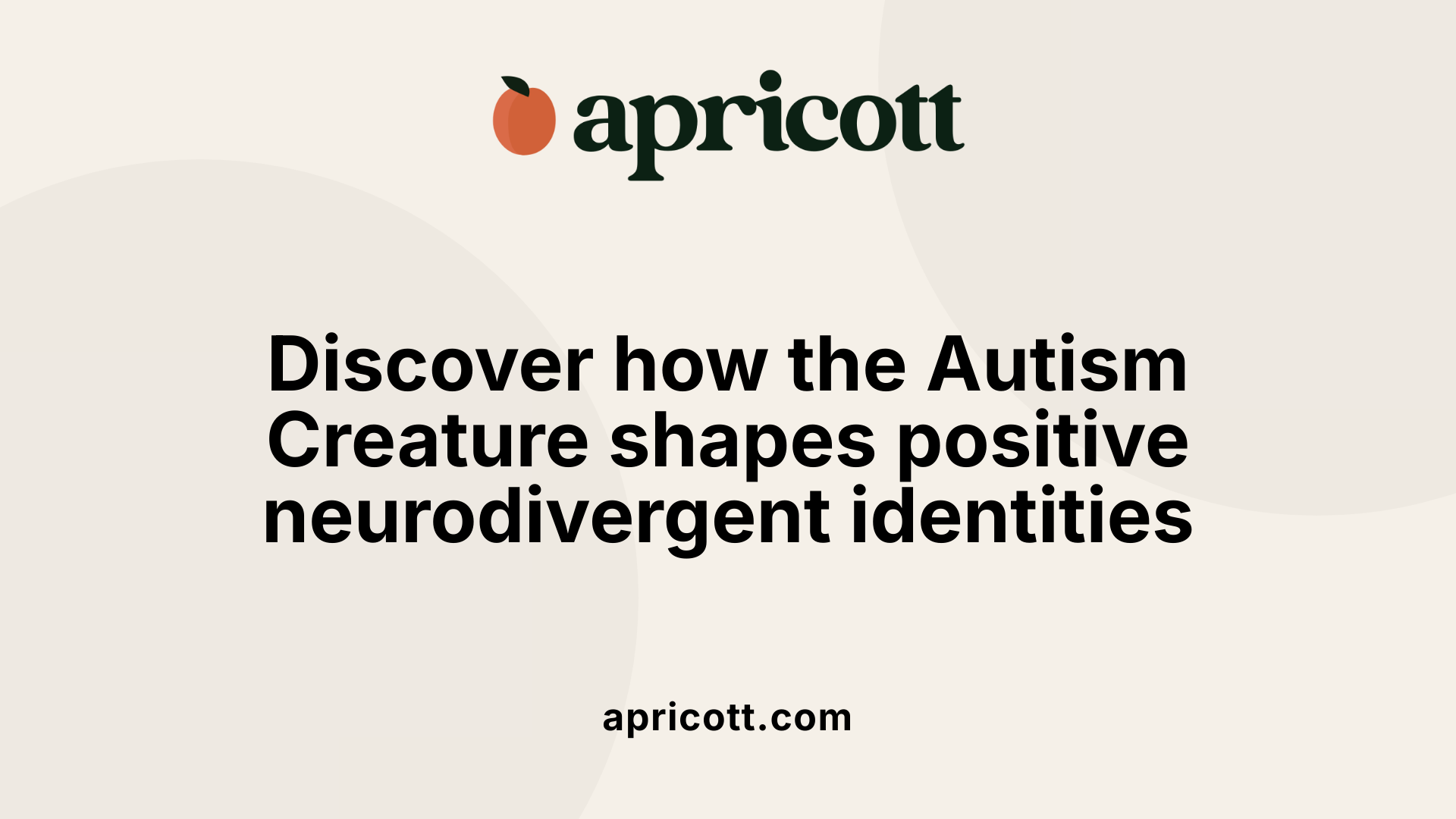
The autism creature, also known as the 'TBH creature' or 'Yippee creature,' began as a modest, hand-drawn character created by Twitter user @acmeiku in January 2021. Initially shared as a personal digital doodle, its warm, squishy appearance and expressive big eyes quickly caught the attention of online communities. By 2022, the creature gained remarkable popularity on platforms like Tumblr, evolving into an emblematic icon recognized across social media. Its simple design allowed for easy adaptation into various formats, making it a versatile symbol of autistic identity.
The autism creature has been widely adopted in internet culture, often appearing in memes, fan art, and digital stories. Its flexible emotional range—depicting happiness, overstimulation, sadness, or neutrality—serves as a visual language to articulate complex internal states. Many community members customize the creature with different expressions or backgrounds, creating relatable content that fosters shared understanding.
The creature’s distinctive catchphrase, 'YIPPEE!!!', is frequently incorporated in upbeat or humorous contexts, emphasizing joy and positivity. These creative expressions help normalize neurodivergent perspectives and make discussions about autism more approachable and engaging, especially for younger audiences.
The autism creature symbolizes unmasked autism—a state before societal pressures encourage masking or conforming. Its unpretentious, emotion-rich design embodies the natural, authentic expression of neurodivergent individuals. This visual representation celebrates the unique sensory sensitivities, particular communication patterns, and the genuine joy that many autistic people experience.
In addition, the creature is portrayed as squishy and huggable, portraying a comforting and non-threatening image. It often appears in supportive contexts, such as awareness campaigns or mental health resources, emphasizing the importance of accepting and understanding diverse neurodivergent experiences.
Community-created symbols like the autism creature play a vital role in fostering authentic representation. Unlike clinical descriptions or stereotypes, these visual icons reflect real lived experiences and help build a shared identity within the neurodivergent community.
Organizations like Revive Health Recovery incorporate the autism creature into their neurodiversity-affirming therapy programs. This not only promotes a positive view of autism but encourages individuals to embrace their true selves without shame. Such symbols support self-advocacy, reduce stigma, and promote respectful dialogue.
| Aspect | Details | Significance |
|---|---|---|
| Origin | Created by @acmeiku on Twitter, 2021 | Represents grassroots creativity |
| Popularity | Viral on Tumblr, widespread on social media | Shows community engagement |
| Variations | Different emotional states, emojis, memes | Allows personalized expression |
| Symbolism | Unmasked, authentic autism | Celebrates genuine neurodivergent identity |
| Use in therapy | Incorporated by organizations like Revive Health Recovery | Promotes neurodiversity-affirming approaches |
Overall, the autism creature exemplifies how community-driven symbols can profoundly impact cultural understanding. It fosters acceptance, showcases neurodiversity’s richness, and helps challenge stereotypes—all through a simple, relatable digital character.
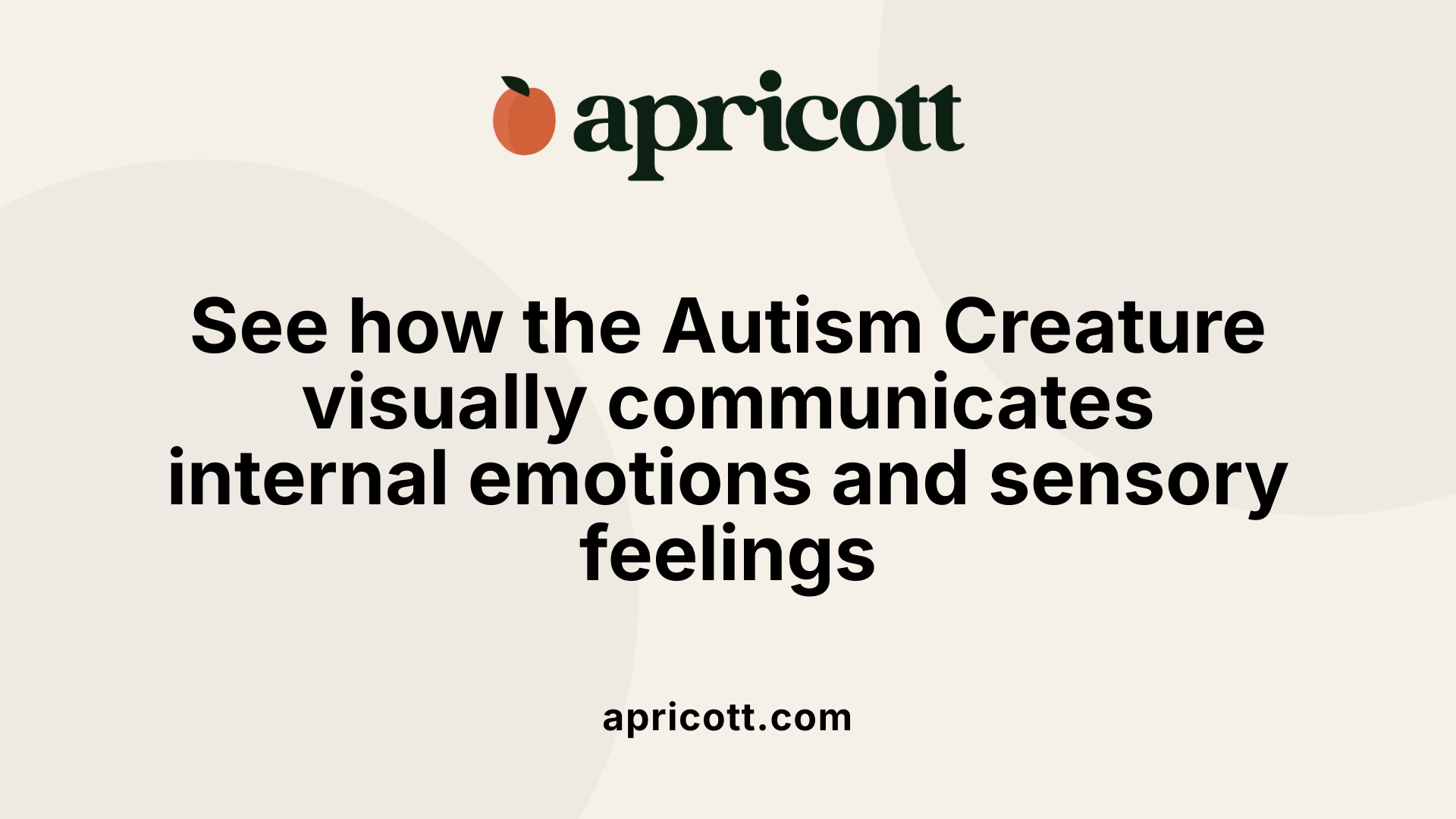
The autism creature serves as a powerful form of visual language, allowing autistic individuals to communicate complex internal states and sensory experiences without relying solely on words. Its simple, expressive design makes it easy to adapt in digital formats such as emojis, memes, and wallpapers. This versatility enables users to depict feelings like joy, overstimulation, or sadness visually, which can be difficult to describe through conventional language.
The creature's big eyes and squishy shape invite a sense of comfort and relatability. When used in various emotional states, it provides a quick, intuitive way for others to understand the sender’s internal experience. For example, a happy, bouncing creature might symbolize excitement, while an overstimulated version with different expressions could indicate sensory overload.
Autistic experiences are often nuanced and difficult to verbalize, especially for children or those with sensory sensitivities. The autism creature encapsulates these feelings through simple but effective visual cues. Community-created variations can depict the creature with different facial expressions or postures, allowing for a nuanced portrayal of emotions like anxiety, excitement, or exhaustion.
This visual approach transcends language barriers and fosters empathy, making internal experiences more accessible. It acts as a bridge, connecting shared understanding across diverse communities, regardless of their language or cultural background.
For many autistic individuals, sensory sensitivities are a core part of their daily lives. The autism creature helps articulate these sensations visually, making it easier to express discomfort, overstimulation, or need for sensory regulation.
When someone shares a version of the creature with a specific sensory state—such as a
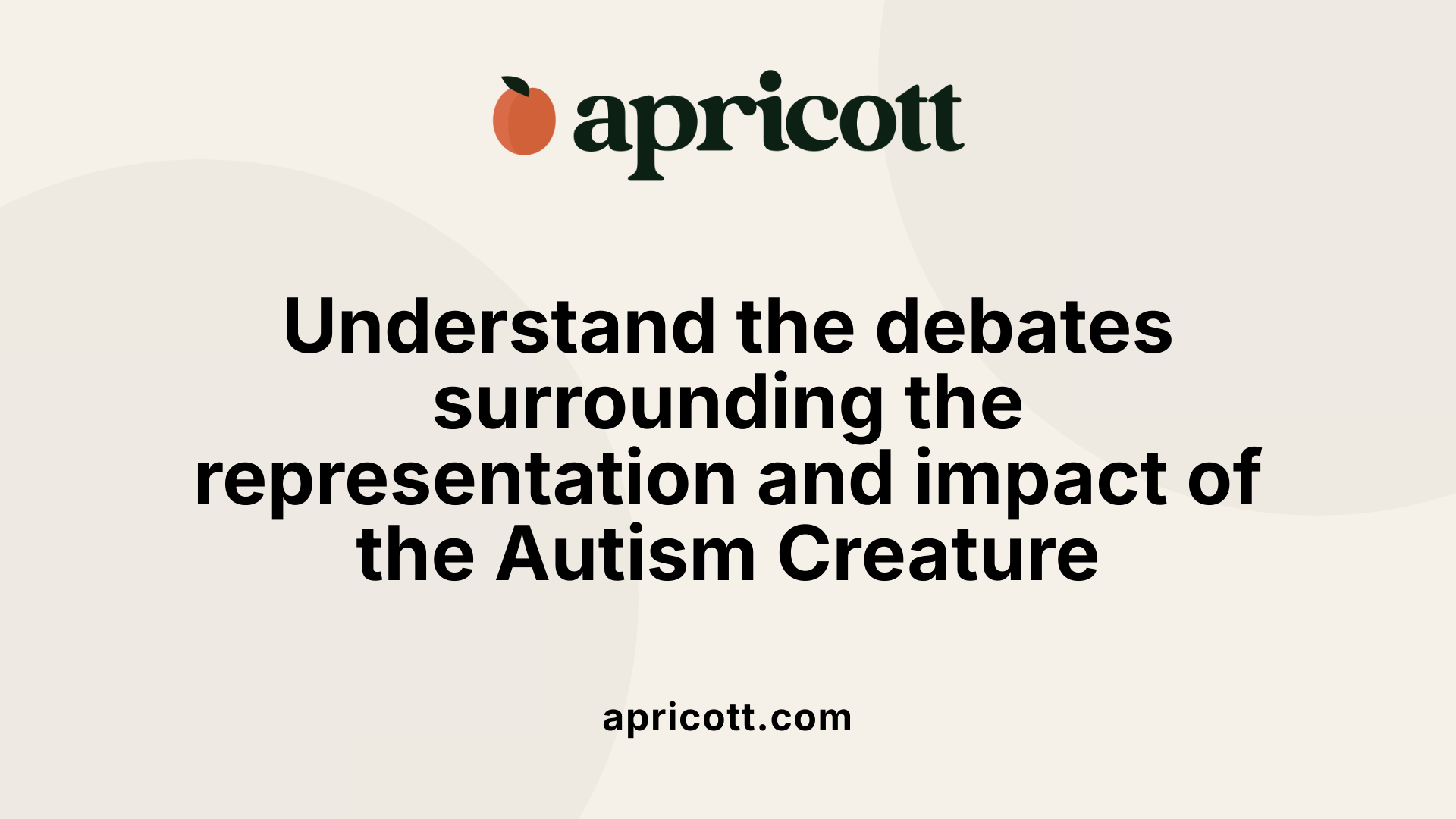
The Autism Creature, also known as the TBH or Yippee Creature, has sparked a range of conversations within and beyond autistic communities. While many see it as a joyful and authentic symbol of neurodivergence, some debates question its representation.
One concern relates to the potential oversimplification of autistic experiences. The creature’s simple, cartoonish design with a neutral or happy expression may not fully capture the diverse and complex realities of individuals on the autism spectrum. Critics worry that such symbolic imagery might promote an overly sanitized or generic view of autism, glossing over the nuanced challenges many face.
Moreover, the commercialization aspect is a point of contention. The creature, initially created organically by Twitter user @acmeiku, gained popularity through internet communities like Tumblr. As it became more widely adopted, concerns arose about whether commercial ventures or merchandise could dilute its authentic message or commodify neurodivergent identities.
There is also an ongoing debate about stereotypes. Some community members worry that the prop-like depiction—squishy, huggable, and often shown in humorous or positive contexts—might unintentionally reinforce stereotypes or a one-dimensional view of autism as solely about joy and sensory sensitivities. It risks overshadowing the diverse experiences, including struggles and societal challenges, that are integral to many autistic individuals.
Respectful and inclusive representation is a significant focus of discussion. Since the Autism Creature emerged organically and was adopted as a cultural symbol by the community, many emphasize the importance of maintaining its authenticity and respecting individual identities.
Overall, these conversations reflect broader concerns about how symbols related to neurodiversity are used, interpreted, and respected. Advocates stress the importance of balancing appreciation with critical awareness to ensure such symbols promote genuine understanding and inclusivity.
| Issue | Perspective | Impact |
|---|---|---|
| Oversimplification | Risk of reducing complex identities | May lead to misinterpretation or stereotypes |
| Commercialization | Potential for diluted message | Can undermine authenticity and original intent |
| Stereotype reinforcement | Simplified images convey fixed ideas | Might limit understanding of varied experiences |
| Inclusive representation | Authentic community-driven symbols | Encourages respectful and nuanced appreciation |
Community dialogue continues to evolve, striving to ensure that symbols like the Autism Creature serve as genuine, respectful representations of neurodivergent lives.
The Autism Creature, also known as the Yippee or TBH creature, holds a special place within the autistic community as a symbol of pride, acceptance, and positive representation. Originally created by Twitter user @acmeiku and gaining popularity on platforms like Tumblr, this simple white character with big eyes has become an unofficial mascot that captures the essence of neurodivergent experiences.
This creature embodies many aspects of autistic identity, such as sensory sensitivities, communication nuances, and moments of joy, often expressed through its various emotional and digital forms like emojis and memes. It challenges common misconceptions about autism by highlighting its natural and unmasked state—representing how many autistic individuals prefer to be seen authentically, without societal pressures to mask or conform.
Beyond individual symbolism, the Autism Creature fosters a sense of community pride and unity. It serves as a rallying point that promotes self-acceptance and encourages autistic individuals to embrace their true selves. The character’s expressive nature, especially its catchphrase 'YIPPEE!!!', celebrates moments of happiness and success, reinforcing positivity within the community.
In addition, the creature plays a role in creating safe cultural spaces for autistic people. These include stim activities—such as sensory play and visual arts—and online spaces where neurodivergent individuals can explore their identities comfortably. The creature’s presence in these environments helps foster emotional comfort, social bonds, and a sense of belonging.
The broader impact of the Autism Creature extends into therapeutic and advocacy contexts as well. For instance, Revive Health Recovery incorporates this symbol within their neurodiversity-affirming programs. By emphasizing authentic identities and tailored support, these initiatives help reinforce the community’s message that autism is a valued and integral part of personal identity.
In sum, the Autism Creature is much more than a cute mascot; it represents a movement towards genuine understanding, pride, and acceptance. It amplifies voices within the autistic community, promotes cultural expression beyond clinical diagnoses, and nurtures safe environments where neurodivergent individuals can thrive, connect, and be proud of who they are.
| Aspect | Description | Additional Notes |
|---|---|---|
| Cultural Symbol | Represents pride, acceptance, and positivity | Embodies resilience and authentic expression |
| Emotional Diversity | Variations showcase different feelings such as happiness, overstimulation, sadness | Helps articulate internal states visually |
| Community Building | Acts as a unifier and identity marker | Used in safe activities and digital contexts |
| Therapeutic Use | Features in neurodiversity-affirming programs | Supports tailored care and understanding |
| Online Presence | Popular in memes, emojis, wallpapers | Enhances digital communication and expression |
The Autism Creature exemplifies how symbols can empower marginalized groups, fostering pride and understanding across cultural and social spaces. Its imagery continues to inspire authentic self-expression and community connection among those on the autism spectrum.
The autism creature, also known as the 'TBH creature' or 'Yippee creature,' is not a biological entity but a community-driven symbol that has gained popularity in online spaces. Created by Twitter user @acmeiku in January 2021, this simple, white character with big eyes has become an artistic and cultural emblem for neurodivergent individuals, especially within autism communities. Its visual appeal and approachable design have led to its adoption across platforms like Tumblr, where it is used in illustrations, memes, and digital expressions.
This creature is a product of collective creativity. Fans and community members have crafted various versions—depicting different emotional states such as happiness, overstimulation, or sadness—and have adapted it into emojis, wallpapers, and other digital formats. The community's role in shaping and disseminating this icon underscores its importance as a shared symbol of identity, acceptance, and resilience.
The autism creature serves as more than just a cute or humorous figure; it is a visual language that communicates complex internal experiences. It embodies unmasked autism—a state of authentic self-expression before societal pressures to conceal or conform to neurotypical behaviors. Through its playful and exaggerated features, the creature visualizes sensory sensitivities, communication styles, and moments of joy or overwhelm common among autistic individuals.
This symbol helps articulate feelings that are often difficult to express verbally. Its squishy, huggable appearance provides a sense of comfort, while the catchphrase 'YIPPEE!!!' captures spontaneous joy, reinforcing positive perceptions of neurodivergence.
Importantly, the autism creature functions as a cultural marker that promotes understanding outside clinical labels. It encourages conversations around neurodiversity by highlighting personal experiences and fostering acceptance. Organizations like Revive Health Recovery incorporate this symbol into their neurodiversity-affirming programs, affirming the importance of authentic identity and individualized care.
In summary, the autism creature stands as a community-created icon that bridges art, identity, and advocacy. It exemplifies how symbols born from shared experiences can deepen societal appreciation of neurodiversity.
| Aspect | Description | Additional Details |
|---|---|---|
| Origin | Created in 2021 by Twitter user @acmeiku | Gained popularity on Tumblr by 2022 |
| Appearance | White character with big eyes, squishy and huggable | Variations include emotional states and expressions |
| Role | Artistic symbol representing autism traits | Used in memes, wallpapers, and advocacy materials |
| Cultural Significance | Embodies unmasked autism and authentic expression | Enhances understanding beyond medical views |
| Usage | Employed in therapy, support programs | Part of neurodiversity celebration and awareness |
This character's strength lies in its community-driven origins. As a community-created icon, it fosters a sense of belonging and empowerment among autistic individuals, celebrating neurodiversity through art and shared symbolism.
The Autism Creature stands as a testament to the power of community and creative expression in shaping perceptions of autism. Its evolution from a simple doodle to a cultural icon underscores the importance of authentic representation, pride, and acceptance. This symbol encapsulates the diverse, vibrant, and resilient nature of the autistic community, serving both as a rallying point and a celebration of neurodiversity. As conversations continue around its use and interpretation, the Autism Creature exemplifies how symbolic imagery can foster understanding, empathy, and pride within and beyond the autism spectrum.